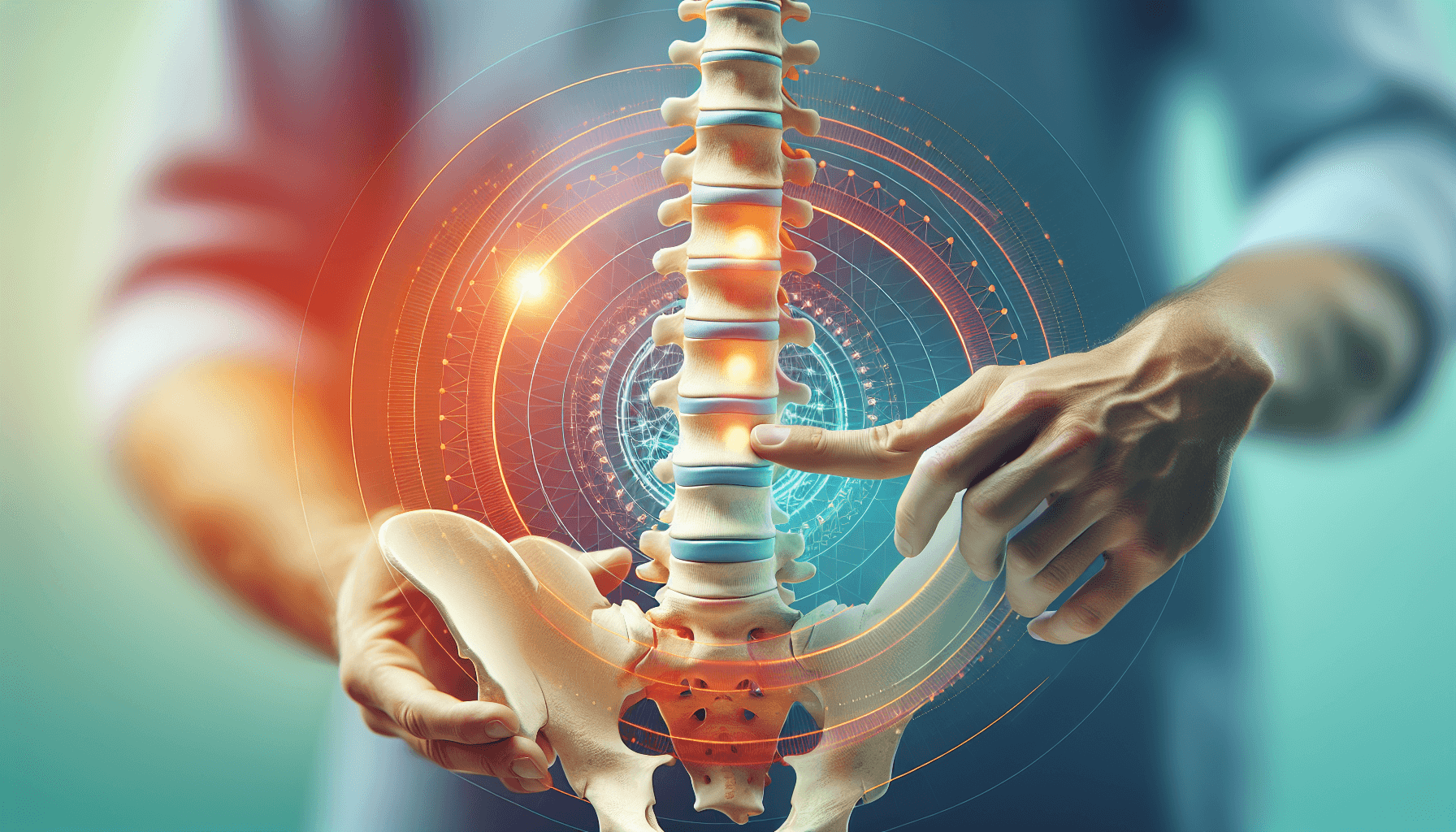Sciatica and hip pain can significantly impact your daily life, making simple tasks like walking, sitting, and sleeping incredibly challenging. If you’ve been suffering from these conditions, you may have tried various treatments with little to no relief. However, one alternative treatment that has shown promising results is chiropractic care.
Understanding Sciatica and Hip Pain
Sciatica refers to the pain that originates in the sciatic nerve, which runs from the lower back down through the buttocks and legs. It often occurs when the nerve is compressed or irritated by a herniated disc, bone spur, or muscle tension. The symptoms of sciatica can vary from mild to severe and may include:
- Sharp, shooting pain in the lower back, buttocks, and legs
- Tingling or numbness in the affected leg
- Weakened muscles and difficulty in controlling leg movements
- Increased pain while sitting or standing for long durations
Hip pain, on the other hand, can have several causes, including arthritis, bursitis, tendonitis, or injuries. It can present as discomfort, stiffness, or shooting pain in the hip joint, groin, or thigh.
How Chiropractic Care Can Help
Chiropractic care focuses on restoring the proper alignment and function of the spine and its surrounding structures. By using gentle spinal adjustments and other therapeutic techniques, chiropractors can alleviate pressure on the affected nerves and promote overall healing.
When it comes to sciatica and hip pain, chiropractic care offers several benefits:
1. Pain Relief:
Chiropractic adjustments can help reduce inflammation and relieve the pressure on the affected nerves, leading to significant pain reduction. By addressing the root cause of the pain, rather than just the symptoms, chiropractic care provides long-term relief without the need for pain medication.
2. Improved Range of Motion:
The misalignment of the spine can restrict the normal range of motion, making movements painful and difficult. Chiropractic adjustments help restore proper alignment, allowing the joints to move more freely and improving flexibility.
3. Enhanced Functioning:
Chiropractic care not only focuses on pain relief but also aims to improve overall functionality. By aligning the spine and optimizing nerve function, chiropractors can help you regain control over your movements, allowing you to perform daily activities with greater ease.
4. Non-Invasive and Drug-Free:
Chiropractic care is a non-invasive and drug-free approach to treating sciatica and hip pain. It avoids the risks and potential side effects associated with medications and surgeries. Instead, chiropractors use hands-on techniques to facilitate the body’s natural healing process.
5. Tailored Treatment Plans:
Chiropractic care is not a one-size-fits-all approach. Each patient is assessed individually, and treatment plans are customized based on their specific needs and condition. This personalized approach ensures that every patient receives the most appropriate and effective care.
6. Holistic Approach:
Chiropractic care takes a holistic approach to healthcare, considering the interconnectedness of the body’s systems. Chiropractors may recommend lifestyle modifications, exercises, and stretches to support the healing process, promote overall wellness, and prevent future issues.
If you’re experiencing sciatica or hip pain, it’s essential to consult with a qualified chiropractor who specializes in treating these conditions. They can conduct a thorough evaluation, diagnose the underlying cause of your pain, and create a personalized treatment plan to help you find relief.
Eastside Ideal Health is a leading chiropractic clinic that offers comprehensive care for patients suffering from sciatica and hip pain. Their experienced chiropractors are skilled in assessing, diagnosing, and treating these conditions using safe, effective, and drug-free techniques.
Don’t let sciatica and hip pain restrict your life any longer. Seek chiropractic care and experience the benefits of a pain-free and more functional body.
What is chiropractic care?
Chiropractic care is a form of healthcare that focuses on the diagnosis, treatment, and prevention of disorders related to the musculoskeletal system, particularly the spine. Chiropractors use various techniques, such as manual adjustments and spinal manipulations, to help restore proper alignment and function of the body.
How can chiropractic care help with sciatica and hip pain?
Chiropractic care can help with sciatica and hip pain by addressing the underlying causes of the symptoms. By identifying any misalignments or imbalances in the spine and pelvis, chiropractors can make adjustments to relieve pressure on the nerves and promote proper alignment. This can help reduce inflammation, alleviate pain, and improve overall function.
Is chiropractic care safe?
Chiropractic care is generally considered safe when performed by a qualified and experienced chiropractor. Like any form of healthcare, there may be some potential risks and side effects, but they are typically minimal. It is important to choose a licensed chiropractor and communicate any concerns or pre-existing conditions before undergoing treatment.
How long does it take to see results from chiropractic care for sciatica and hip pain?
The length of time it takes to see results from chiropractic care for sciatica and hip pain can vary depending on the individual and the severity of the condition. Some people may experience immediate relief after a few sessions, while others may require ongoing treatment over a longer period of time. Your chiropractor will develop a personalized treatment plan to address your specific needs and goals.
Can chiropractic care be used as a standalone treatment for sciatica and hip pain?
Chiropractic care can be used as a standalone treatment for sciatica and hip pain for many individuals. However, in some cases, a multidisciplinary approach that combines chiropractic care with other therapies, such as physical therapy or medication, may be recommended for optimal results. Your chiropractor will assess your condition and provide the most appropriate treatment plan for you.
Are there any exercises or stretches that can complement chiropractic care for sciatica and hip pain?
Yes, there are several exercises and stretches that can complement chiropractic care for sciatica and hip pain. Your chiropractor may recommend specific exercises or stretches that target the affected area to improve strength, flexibility, and stability. These exercises and stretches can help maintain the benefits of chiropractic adjustments and promote long-term relief.
How often do I need to visit a chiropractor for sciatica and hip pain?
The frequency of chiropractic visits for sciatica and hip pain can vary depending on your condition and the recommended treatment plan. In the beginning, you may need more frequent visits to address acute symptoms and bring about initial relief. As you progress and your symptoms improve, the frequency of visits may decrease. Your chiropractor will guide you on the appropriate schedule for ongoing maintenance or as needed.
The Relationship Between Yoga and Pain Relief for Sciatica and Hip Pain.
Living with chronic pain can be debilitating and significantly impact your quality of life. Conditions such as sciatica and hip pain can make simple everyday tasks a struggle. Many people turn to traditional forms of treatment such as medication, physical therapy, or even surgery. However, there is a natural alternative that has been gaining popularity in recent years - yoga.
The Benefits of Yoga for Pain Relief
Yoga is an ancient practice that combines physical postures, breathing exercises, and meditation. It has been practiced for centuries to promote holistic well-being and improve physical, mental, and emotional health. In recent years, research has shown that yoga can be an effective tool for managing and reducing pain.
For individuals suffering from conditions like sciatica or hip pain, yoga can help in the following ways:
- Improved flexibility and mobility: Yoga incorporates a range of gentle stretching and strengthening exercises that can help improve flexibility and mobility in the spine, hips, and legs.
- Strengthening of core muscles: Many yoga poses focus on engaging the core muscles, which can help support the spine and provide stability to the hips and pelvis.
- Increased body awareness: Through regular practice, yoga can help individuals become more in tune with their bodies and better understand the patterns and triggers of their pain.
- Stress reduction: Chronic pain can often be exacerbated by stress and tension. Yoga incorporates relaxation techniques and mindfulness, which can help reduce stress levels and promote relaxation.
- Improved posture: Poor posture can contribute to back and hip pain. Yoga can help correct postural imbalances and promote a neutral spine alignment.
- Enhanced mind-body connection: Yoga encourages individuals to focus on their breath and be present in the moment. This mind-body connection can help individuals better manage their pain and reduce their perception of discomfort.
It is important to note that yoga should be practiced under the guidance of a qualified instructor, especially for individuals with existing injuries or medical conditions. Consulting with a healthcare professional prior to starting a yoga practice is also recommended to ensure safety and suitability.
Specific Yoga Poses for Sciatica and Hip Pain Relief
When it comes to targeting sciatica and hip pain specifically, certain yoga poses can be particularly beneficial. Here are a few examples:
- Child's Pose (Balasana): This gentle resting pose can help stretch and release tension in the lower back and hips. It provides a gentle traction for the spine and promotes relaxation.
- Pigeon Pose (Eka Pada Rajakapotasana): Pigeon pose can help stretch the hip flexors and glutes, providing relief for tightness and discomfort in the hips. It is important to modify the pose if necessary, based on individual flexibility and comfort level.
- Bridge Pose (Setu Bandhasana): Bridge pose helps strengthen the back, glutes, and hamstrings, while also stretching the hip flexors. It can help improve overall hip mobility and alleviate pain caused by tightness.
- Thread the Needle Pose: This pose targets the glutes and outer hip muscles, providing relief for sciatica and hip pain. It gently stretches and releases tension in the affected areas.
- Supine Figure 4 Stretch: This pose targets the piriformis muscle, which can often put pressure on the sciatic nerve when tight. Stretching this muscle can help alleviate sciatic pain.
Remember, it is important to listen to your body and only practice poses that are comfortable and safe for you. If you experience any pain or discomfort during a yoga pose, it is recommended to stop and consult with a healthcare professional.
Getting Started with Yoga for Pain Relief
If you are considering incorporating yoga into your pain management routine, here are a few tips to get started:
- Find a qualified instructor: Look for a certified yoga instructor with experience in working with individuals dealing with pain or injuries. They can guide you through a practice that is safe and tailored to your needs.
- Start with gentle and beginner-friendly classes: Begin with gentle or beginner-friendly yoga classes that focus on stretching, gentle movements, and relaxation. As you build strength and flexibility, you can gradually progress to more intermediate or advanced classes.
- Listen to your body: Pay attention to how your body feels during and after each yoga session. If a certain pose or movement causes discomfort or pain, modify or skip that pose altogether.
- Be consistent: Like any form of exercise or therapy, consistency is key. Aim to practice yoga regularly, even if it's just for a few minutes each day. Over time, you may start to notice the benefits and improvements in your pain levels.
- Combine yoga with other forms of treatment: While yoga can be effective for pain relief, it is often most beneficial when used in conjunction with other forms of treatment such as chiropractic care, physical therapy, or pain management techniques. Consult with your healthcare provider to create a comprehensive plan for managing your pain.
At Eastside Ideal Health, we understand the importance of holistic pain management. Our team of experienced chiropractors, physical therapists, and sports medicine experts can work with you to develop a personalized treatment plan, incorporating techniques like yoga, to help alleviate your sciatica and hip pain. Contact us at Eastside Ideal Health to schedule an appointment and start your journey towards pain relief and improved well-being.
Disclaimer: This article is for informational purposes only and should not constitute medical advice. Always consult with a qualified healthcare professional before starting any new exercise or treatment program.

